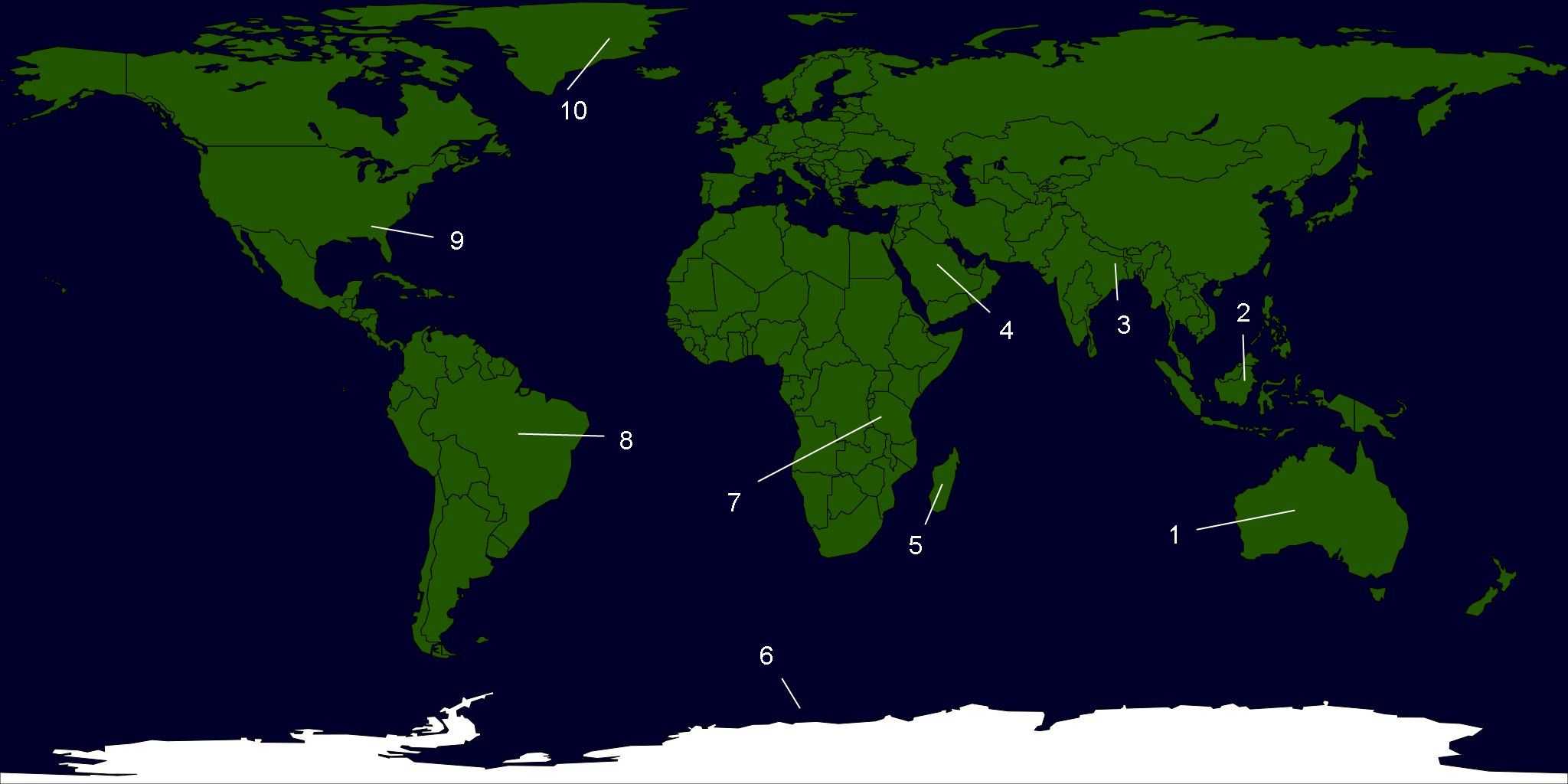
Mapping Animals Trivia Quiz
This list of animals names those endemic to certain regions of the world. Place them against the correct labelled region on the map. Bear in mind some of these animals may be found in more than one region.
A label quiz
by suomy.
Estimated time: 3 mins.
